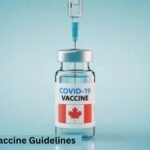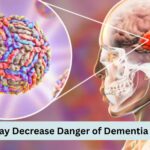Scientific Asia: New research on “Weekend Warriors” taught us a new point. It found that focusing on exercise for 1 or 2 days a week can reduce depression and over 200 diseases, including heart disease and diabetes.
As long as they complete the suggested 150 minutes of moderate-to-intense exercise per week, the study indicated that weekend warriors reap the same benefits as those who work out more evenly throughout the week. The study analyzed data from almost 90,000 people. It showed the health benefits of an active lifestyle, no matter how exercise is distributed.
These results imply that the most important element in disease prevention is overall exercise volume rather than frequency.
- Weekend exercise is as good as regular weekly workouts for disease prevention.
- Both exercise routines reduce the risk of more than 200 illnesses, including diabetes and heart disease.
- Getting the recommended 150 minutes of activity per week is essential, no matter how it’s split up.
Some people only get in one or two days of moderate-to-vigorous exercise per week because they are too busy with work and other commitments.
A study by researchers at Massachusetts General Hospital found that a “weekend warrior” pattern of exercise is linked to a lower risk of 264 future diseases. The hospital is a founding member of the Mass General Brigham healthcare system. It was also found to be just as effective at lowering risk as more evenly distributed exercise.
Co-senior author Shaan Khurshid, MD, MPH, is a faculty member at Massachusetts General Hospital’s Demoulas Center for Cardiac Arrhythmias. He said, “Physical activity is known to affect the risk of many diseases.”
We have previously demonstrated the benefits of weekend warrior exercise. Now, we will show its potential to lower the risk of many future ailments, from mood disorders to chronic kidney disease.
For overall health, guidelines suggest engaging in at least 150 minutes of moderate-to-vigorous physical activity every week. Do those who exercise for 20 to 30 minutes most days of the week, as recommended, benefit more than those who exercise for only five or six days in a row?
Co-senior author Khurshid analyzed data from 89,573 participants in the UK Biobank study, where they wore wrist accelerometers to track their physical activity and exercise intensity over a week. Dr. Patrick Ellinor, acting chief of cardiology and co-director of the Corrigan Minehan Heart Center at Massachusetts General Hospital, also contributed to the study.
Using the guideline-based criteria of 150 minutes per week of moderate-to-vigorous physical activity, participants’ patterns of physical activity were classified as weekend warriors, regulars, or inactive.
Racism and many social acts can affect the health of the Asian American heart
The researchers next searched for correlations between patterns of physical activity and the occurrence of 678 ailments spanning 16 different illness categories, such as neurological, digestive, and mental health issues.
Compared to inactivity, the investigators’ studies showed that weekend warriors and regular physical activity routines were both significantly related to lower chances of over 200 diseases.
The largest associations were found for cardiometabolic disorders such as diabetes (43% and 46% reduced risks, respectively) and hypertension (23% and 28% lower risks after a median of 6 years with weekend warriors and regular activity, respectively). All of the examined illness categories were included in the associations, though.
U.Va. Health faculty ultimatum clear away of health system CEO, School of Medicine dean
“Our results held for numerous interpretations of weekend warrior activity and other thresholds for classifying individuals as active,” Khurshid stated.
The findings imply that physical activity is generally advantageous in reducing the likelihood of developing diseases in the future, particularly cardiometabolic disorders. “The total amount of activity, rather than the pattern, that matters most may be the weekend warrior’s benefits compared to regular activity,” Khurshid said.
We need more research to explore how concentrated exercise can boost public health. In the meantime, patients should be encouraged to follow physical activity guidelines in whatever way works best for them.
Resource: Neuroscience news
















